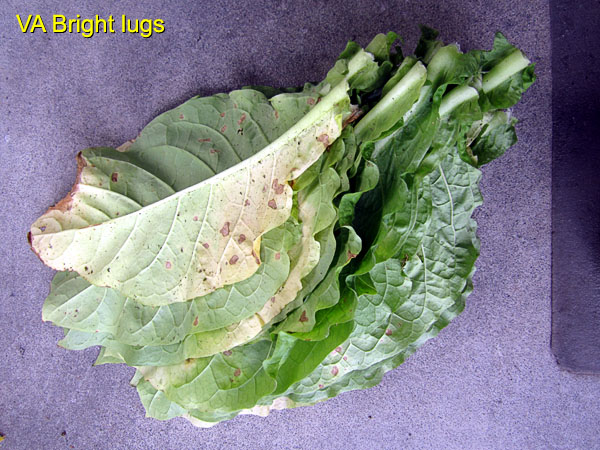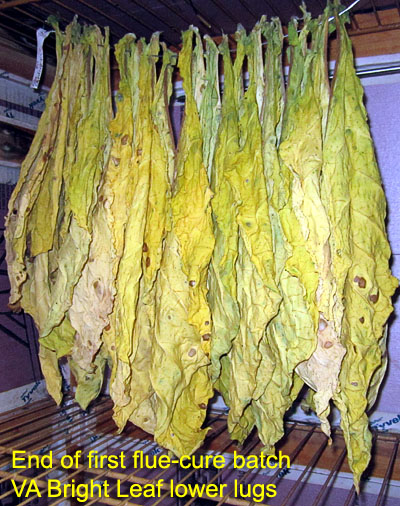Excellent question. With the Cozy Can, I was afraid that the proximity of the Crockpot to the leaf (in the cramped quarters of a trash can) might dry the leaf during the yellowing phase of flue-curing, so I added enough water at the start, to last at least through the first day of yellowing. Thereafter, I allowed it to run dry. The remainder of the run, all the way to 165ºF, was done using a dry Crockpot.When flue curing, do ever need to add water to the crock pot, or are you simply running it dry the whole time? Thanks!
With the endoskeletal kiln, I've never flue-cured in it. Because of the greater size of the container, the greater distance between the Crockpot and the hanging leaf, and the presence of a circulation fan (which was lacking in the Cozy Can), I intend to leave the Crockpot dry throughout the flue-cure runs.
One huge advantage of the endoskeletal kiln over the Cozy Can is that the temperature control in the former is digital, and maintains fairly precise control. Also, the insulation is better.
Of course, the whole point of the Cozy Can was to demonstrate just how crude the setup could be, yet still successfully flue-cure bright leaf. In neither the Cozy Can nor the kiln is there a wet-bulb/dry-bulb thermometer. That "wet-bulb temp" on the graph is aspirational for me, but I'll never know.
Bob






